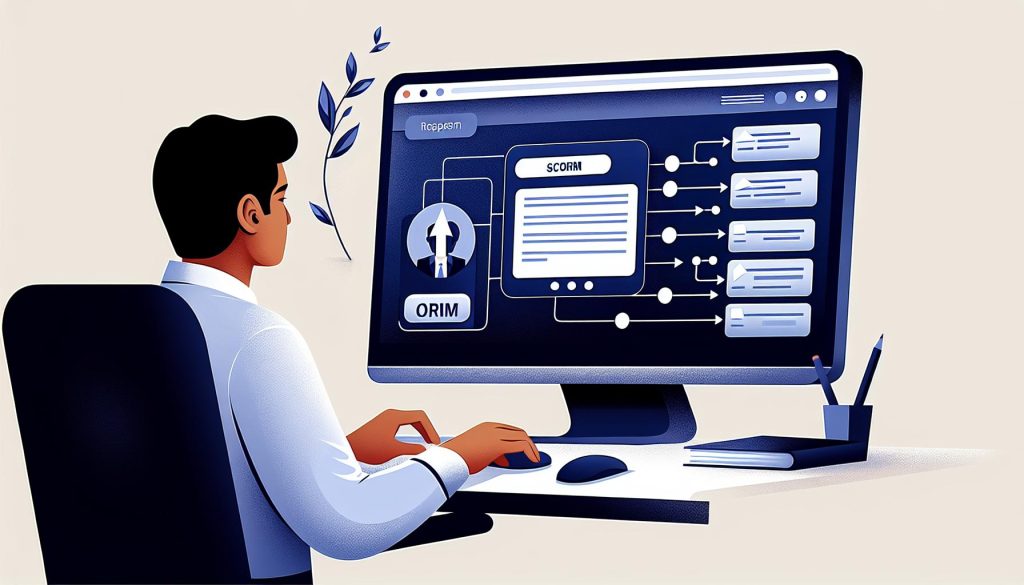
The Sharable Content Object Reference Model (SCORM) remains the cornerstone of eLearning content development and distribution. Over the years, SCORM has evolved to ensure compatibility, improved user experiences, and efficiency in eLearning standards. In this article, we’ll explore the latest SCORM versions, their updates, and how they impact eLearning development.
What is SCORM?
SCORM is a set of technical standards that enable eLearning content and Learning Management Systems (LMSs) to communicate effectively. SCORM ensures that learning objects such as quizzes, videos, and interactive modules can be shared and tracked across different platforms, maintaining interoperability.
SCORM Versions: A Quick Overview
Before diving into the updates, here’s a quick breakdown of the major SCORM versions:
- SCORM 1.1 – The earliest version, now largely obsolete.
- SCORM 1.2 – Widely adopted, offers better compatibility but limited functionality compared to newer versions.
- SCORM 2004 – Introduced multiple editions (1st, 2nd, 3rd, and 4th editions), each with improved tracking, sequencing, and enhanced API standards.
Why Do SCORM Versions Matter?
Every SCORM version enhances learning content delivery, tracking, and performance reporting, making it crucial for developers and instructional designers to use the latest SCORM versions for optimal course compatibility and learner experience.
Key Updates in the Latest SCORM Versions
1. Improved API Features
The most recent SCORM versions, particularly SCORM 2004 (4th Edition), focus on improving API functions to ensure more reliable data communication between content and LMSs. This includes:
- Better course tracking: SCORM 2004 provides improved sequencing and navigation rules for smoother course completion tracking.
- Increased data reliability: Ensures that progress, quiz scores, and completion statuses are accurately recorded.
2. Enhanced Sequencing and Navigation
SCORM 2004 introduced advanced sequencing rules that allow content creators to define complex learning paths. In the latest versions, these rules have been refined, making it easier for learners to follow personalized learning journeys based on their progress and performance.
- Adaptive learning paths: Learners can be guided through different course segments depending on their quiz results or interactions with previous sections.
- Automated content delivery: Content can now be automatically adjusted based on learner performance, enhancing the learning experience.
3. Better Error Handling and Debugging
Error handling is crucial for a seamless eLearning experience, especially in SCORM courses that interact heavily with LMS platforms. SCORM 2004 (4th Edition) addresses this by improving the system’s ability to handle errors effectively and providing more detailed debugging information. This feature is invaluable for developers working on complex course designs, as it reduces the chances of technical failures disrupting the learning process.
4. Mobile Compatibility
While SCORM was originally designed for desktop environments, the latest SCORM updates emphasize mobile-first design principles. Modern learners demand access to eLearning content on mobile devices, and SCORM now ensures better mobile compatibility without losing tracking functionality.
- Responsive design support: eLearning courses can adapt to various screen sizes without sacrificing usability or functionality.
- Mobile reporting: Learner data is tracked just as accurately on mobile devices as it is on desktop environments, allowing LMS platforms to function seamlessly across devices.
5. xAPI Compatibility
The latest SCORM developments also acknowledge the rise of Experience API (xAPI), which tracks more granular learning experiences beyond the limitations of traditional SCORM standards. While xAPI and SCORM are distinct, there is increasing interoperability between the two, allowing developers to use the latest SCORM versions alongside xAPI features.
- Enhanced learner data: xAPI tracks detailed learner interactions outside the LMS, providing deeper insights into performance.
- Cross-platform support: xAPI extends SCORM’s functionality by allowing learning experiences to be tracked across multiple platforms and devices, including virtual and augmented reality tools.
Why Upgrade to the Latest SCORM Versions?
Upgrading to the latest SCORM version offers numerous advantages:
- Enhanced compatibility: Ensures your eLearning content works smoothly across different LMS platforms.
- Improved learner experience: Advanced sequencing, better tracking, and mobile compatibility lead to a more engaging learning process.
- Future-proofing your courses: By using the most recent SCORM standards, your courses are prepared for future eLearning technology trends, ensuring longevity and reducing the need for constant updates.
Conclusion
Staying up-to-date with the latest SCORM versions is essential for instructional designers and developers who want to deliver optimal eLearning experiences. With improved API functionality, enhanced sequencing, mobile-first design, and xAPI compatibility, SCORM continues to be the standard that drives innovation in the eLearning industry. Ensure your courses are SCORM-compliant to provide learners with a seamless, high-quality education experience.
